Wish you were here
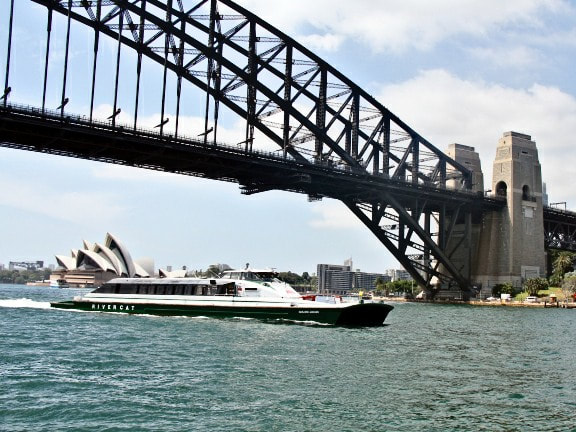
Ask any Sydneysider about Sydney and they will probably tell you that it is the best city in the world.
Great beaches, great harbour, plenty of sports, beer and BBQ’s. Perhaps the motorists won’t be quite as complimentary. Ask any visitor about Sydney and the Opera House, the Harbour Bridge and Bondi Beach will probably be the first to come to mind, but Sydney is much more than a three horse town.Let’s start our visit at Mrs Macquarie’s Chair.
Great beaches, great harbour, plenty of sports, beer and BBQ’s. Perhaps the motorists won’t be quite as complimentary. Ask any visitor about Sydney and the Opera House, the Harbour Bridge and Bondi Beach will probably be the first to come to mind, but Sydney is much more than a three horse town.Let’s start our visit at Mrs Macquarie’s Chair.
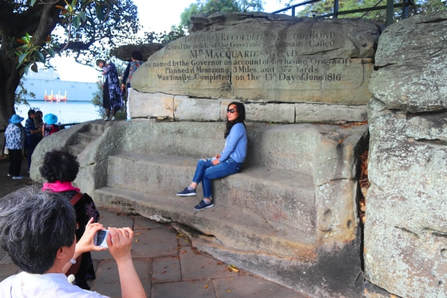
This may not feature on the must see list of most visitors to Sydney but it is the ideal place to get that photograph with both the Harbour Bridge and the Opera House in the background.
Post it on social media with the caption “wish you were here” and all the folks back home will know exactly where you are. (So too will the housebreakers and burglars.) After all, a picture with the Eifel Tower could have been shot in Las Vegas, the Statue of Liberty in many places around the world and the Pyramids could have been shot just around the corner in the Botanical Gardens, but this scene of the two icons is uniquely Sydney.The ‘chair’ is a rock cut into the shape of a bench, hand carved by convicts from sandstone in 1810 for Governor Macquarie's wife Elizabeth.
Post it on social media with the caption “wish you were here” and all the folks back home will know exactly where you are. (So too will the housebreakers and burglars.) After all, a picture with the Eifel Tower could have been shot in Las Vegas, the Statue of Liberty in many places around the world and the Pyramids could have been shot just around the corner in the Botanical Gardens, but this scene of the two icons is uniquely Sydney.The ‘chair’ is a rock cut into the shape of a bench, hand carved by convicts from sandstone in 1810 for Governor Macquarie's wife Elizabeth.
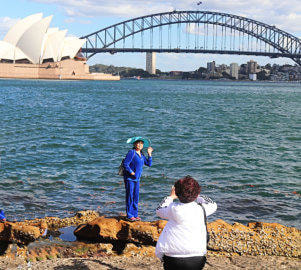
The peninsula itself is named Mrs. Macquarie's Point, and is part of The Domain, near the Royal Botanic Gardens.
Can there have been a better place to sit and watch the sailing ships go by?Take a stroll through the Royal Botanical Gardens and pay a visit to our very own Pyramids. With the right back-lighting it could look the part, except for the lush vegetation.
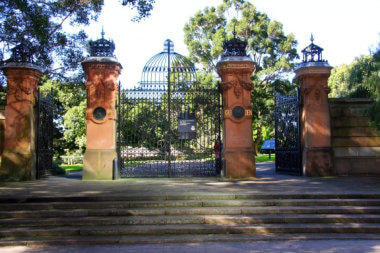
At the entrance to the gardens in Macquarie Street are the Palace Garden Gates, built to commemorate the International Exhibition of 1879.The Sydney International Exhibition opened the doors of its main building the 'Garden Palace' on 17 September 1879 and closed them seven months later. It was constructed primarily from timber, which was to assure its complete destruction when engulfed by fire in the early morning of a September day in 1882.
Only the gates remain.Walk down the street towards the Opera House which surely must rank as the number one tourist destination, thanks to the Danish architect that designed it and the Aussies love of gambling and the lottery that helped fund it.At the side of the opera house are the Man-o-War Steps.
Only the gates remain.Walk down the street towards the Opera House which surely must rank as the number one tourist destination, thanks to the Danish architect that designed it and the Aussies love of gambling and the lottery that helped fund it.At the side of the opera house are the Man-o-War Steps.
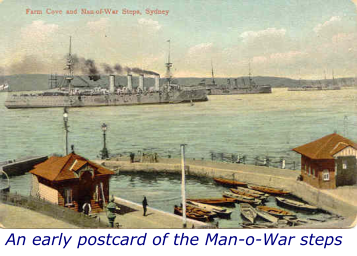
History books tell us that "On December 17 1817, Governor Macquarie laid the foundation stone of the fort now bearing his name. Prior to this, he had built for his private use a small landing place known as Man O'War Steps. In the '50s, female immigrants were landed at Man O'War Steps and marched through the Gardens and the Domain to their barracks."
This "small landing place' appears to have been a wooden construction of approximately the same configuration as the existing jetty. It enclosed a small beach and protected boat harbour, which became known temporarily as "Port Lachlan," after Macquarie's son Lachlan. Gradually the jetty was repaired and improved, and ceased to be reserved for the exclusive use of the Governor.
By 1850, it was referred to by the Admiralty as a 'stone pier,' and stated to be in use for watering shipping anchored nearby. This shipping often and sometimes chiefly comprised warships , hence the name by which the jetty and steps are now known.The entire precinct was destroyed in the course of the construction of the Sydney Opera House, but the jetty and steps survived. It was rebuilt in the early 1970s and reopened in 1973. Memorial plaques on the stone pillars on each side of the seawall entrance commemorate its history, particularly in the Naval context. After walking around the Opera House, perhaps doing a tour of the inside of the building, and having something to eat or drink at the string of eating places around Circular Quay, it is time to move on in the direction of The Rocks.
This "small landing place' appears to have been a wooden construction of approximately the same configuration as the existing jetty. It enclosed a small beach and protected boat harbour, which became known temporarily as "Port Lachlan," after Macquarie's son Lachlan. Gradually the jetty was repaired and improved, and ceased to be reserved for the exclusive use of the Governor.
By 1850, it was referred to by the Admiralty as a 'stone pier,' and stated to be in use for watering shipping anchored nearby. This shipping often and sometimes chiefly comprised warships , hence the name by which the jetty and steps are now known.The entire precinct was destroyed in the course of the construction of the Sydney Opera House, but the jetty and steps survived. It was rebuilt in the early 1970s and reopened in 1973. Memorial plaques on the stone pillars on each side of the seawall entrance commemorate its history, particularly in the Naval context. After walking around the Opera House, perhaps doing a tour of the inside of the building, and having something to eat or drink at the string of eating places around Circular Quay, it is time to move on in the direction of The Rocks.
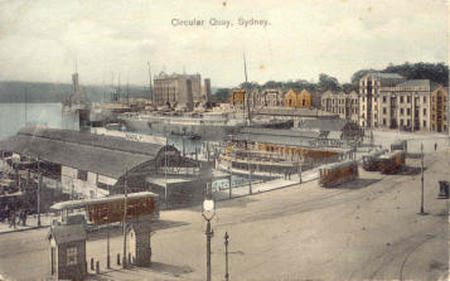
On one side of Circular Quay is the hub of the ferry service servicing all of Sydney along the harbour. Before the completion of the harbour bridge in 1932, Sydney had the most extensive ferry network of any global city. It still is a very busy and well patronised service and a trip the Taronga Zoo or Watsons Bay are both highly recommended.
Facing the Quay is the old Customs House and Since opening in 1845, it been the entry point for newly arrived goods, people and ideas flowing into Sydney. One of Sydney’s iconic heritage buildings, Customs House is open to everyone.
Facing the Quay is the old Customs House and Since opening in 1845, it been the entry point for newly arrived goods, people and ideas flowing into Sydney. One of Sydney’s iconic heritage buildings, Customs House is open to everyone.
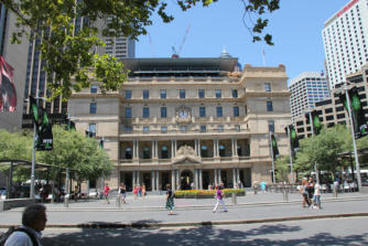
This unique public space connects our history with our future and continues to thrive as a dynamic place to meet, create and learn. It is now dwarfed by the neighbouring buildings.While wandering around the rocks area, keep an eye open for the Argyle Cutting, a tunnel cut through the giant sandstone cliffs that enclose The Rocks district. The opening grants access from The Rocks and Sydney Cove to Millers Point and Darling Harbour. It is an impressive engineering feat even by today's standards, given the wall of sandstone that runs across the top of The Rocks.
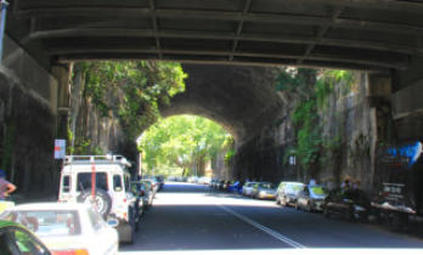
In the convict days it would have seemed a daunting task to cut through the rock. Work begun on the Argyle Cut in 1843 with convicts chipping away at the sandstone with picks. Work was suspended until 1859 it resumed, but this time with the use of explosives and council labour.
In the early years of the colony convicts worked on quarrying out sandstone to make the rocky area on the western shore of Sydney Cove liveable for officers and later wealthy settlers. The convicts themselves lived in tents or huts made from wooden slats daubed with mud, later poorly fired bricks were used that dissolved in the rain. More substantial homes were later built for working class tenants in the 1840s using assigned convict labour. Some of these structures still survive.somewhere in the Rocks area.
In the early years of the colony convicts worked on quarrying out sandstone to make the rocky area on the western shore of Sydney Cove liveable for officers and later wealthy settlers. The convicts themselves lived in tents or huts made from wooden slats daubed with mud, later poorly fired bricks were used that dissolved in the rain. More substantial homes were later built for working class tenants in the 1840s using assigned convict labour. Some of these structures still survive.somewhere in the Rocks area.
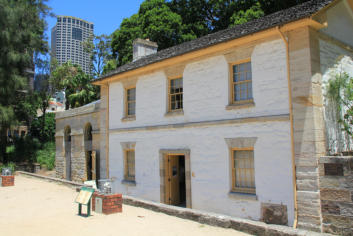
Cadman's Cottage, a small sandstone house nestled in the Rocks, in one of the city’s most historic precincts was built in 1816 and originally stood on a rocky shore with a small sandy beach. It was built by convict workers as part of the government dockyard on the western side of Sydney Cove.
When it was built the cottage, commissioned by Governor Macquarie, stood on a rocky shore with a small sandy beach. The name is derived from its best-known resident, John Cadman, a former convict who later received a full pardon.It has been a full day, so perhaps it is time for a sundowner and what better place than somewhere in the Rocks area.
When it was built the cottage, commissioned by Governor Macquarie, stood on a rocky shore with a small sandy beach. The name is derived from its best-known resident, John Cadman, a former convict who later received a full pardon.It has been a full day, so perhaps it is time for a sundowner and what better place than somewhere in the Rocks area.
|
Back to travelogue home page
|
Click on the arrow above to shoot to next page:-
Walk About Sydney CBD |
Proudly powered by Weebly

